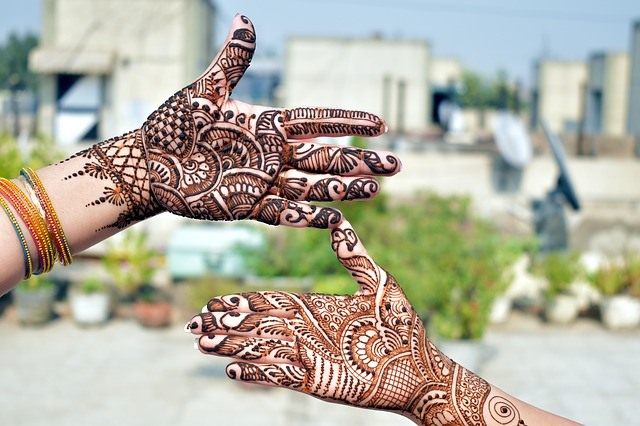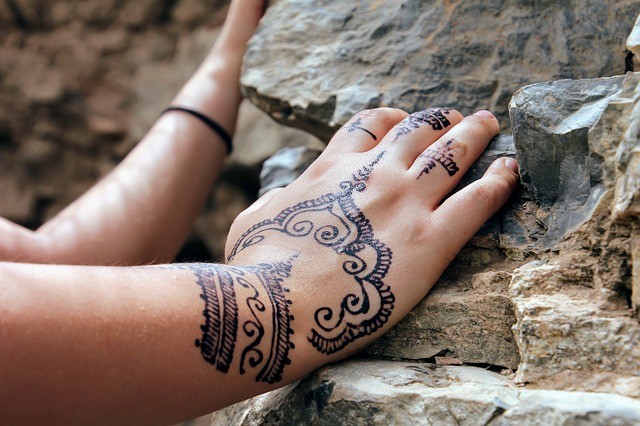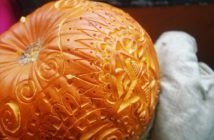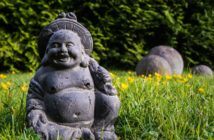Henna is a South Asian tradition of temporary tattoos.
The concoction itself is a paste made from the powdered leaves of the henna plant, and traditional henna is drawn on the hands and feet in delicate patterns.
Modern henna is applied on any part of the body, and it’s a great way to create designs that last only a short period of time, unlike regular tattooing.
Homemade henna is becoming more and more popular, and it’s easy to do! Let’s take a look at how to do henna tattoos in the comfort of your own home.
There are all kinds of henna tattoo kits that come with all of the supplies you need, as well as guides on how to apply henna.
However, it’s easy to create yourself without investing in an expensive kit.
Contents
What’s the Purpose of Henna?
Why do people get henna tattoos? Aside from not being ready to get a permanent tattoo, there is a lot of meaning behind many of the designs and placements.
For example, a henna tattoo on the top of the hand can be suggestive of protection, and often has designs similar to a shield.
Henna on the feet has more spiritual designs, meant to connect the wearer’s body, mind, and spirit to the earth.
A henna tattoo placed on the palm is considered a blessing. Typically, men get henna tattoos on their right hand because it is considered projective, whereas women get it tattooed on the left hand, to be receptive.
DIY Henna Tattoo Mixture
Before you start designing your first henna tattoo, you’ll need to gather a few materials.
Up first is:
Fresh Henna Powder
This can be found at Indian grocery stores, many pharmacies or specialty stores, or online at retailers such as Amazon.
When you get your henna powder, make sure it has a greenish-brown color.
If it is too green, it may include added dye to ensure it appears fresher than it actually is. If it’s too brown, it’s likely old and won’t leave a good stain.
The fresher and better quality henna you can find, the better henna tattoo you will make. This may result in your spending a good amount of money on henna powder, but it will go a long way.
Once it is made into a paste, you can keep the excess in the freezer to avoid waste, while also saving on costs.
Additionally, you’ll need:
- Lemon juice, or distilled water at room temperature.
- Sugar, molasses, or some other sweetener. It is not recommended that you use any kind of artificial sweetener.
- Pure essential oil. The best types of essential oil to help the henna darken are cajeput, tea tree, lavender, frankincense, and cardamom. Essential oils can be found at most pharmacies or specialty stores, as well as at online retailers. Take care of these products, as some can be toxic when ingested.
- Olive oil or vegetable oil.
- Rubbing alcohol.
- Mild soap.
- A mixing bowl and spoon (not metal).
- Plastic wrap.
- Ziploc bags (and a decorating tip, if you so desire).
- Tape, scissors, and gloves.
- A well-lit table, covered in newspaper to keep from staining your furniture.
Making the Henna
Sift the henna powder to ensure all larger chunks are eliminated. Then, measure out ¼ cup of henna powder into the bowl.
Add ¼ cup of lemon juice or water while stirring; you should end up with a consistency similar to pudding.
If it seems too thick, very slowly add more lemon juice or water to avoid it becoming too liquidy, and make sure you work away any clumps beginning to form as you stir.
Next, add ½ tsp. of your sweetener, and ½ tsp. of your essential oil. This should turn your mixture silky, giving it a thickness more like toothpaste, but the texture should be finer and slightly runnier.
Now, cover the henna mixture with plastic wrap and let it sit. Some find it acceptable after only an hour or two, but for the best results, let it sit at room temperature for 24 hours.
Applying Henna Tattoo Designs
Preparing
After patiently waiting, it’s time to apply.
Learning how to make a henna tattoo can be tricky at first, so don’t get discouraged if it requires some trial and error at the beginning.
Using your scissors, snip out the corner of a Ziploc bag. If you have a decorating tip, insert it into this hole.
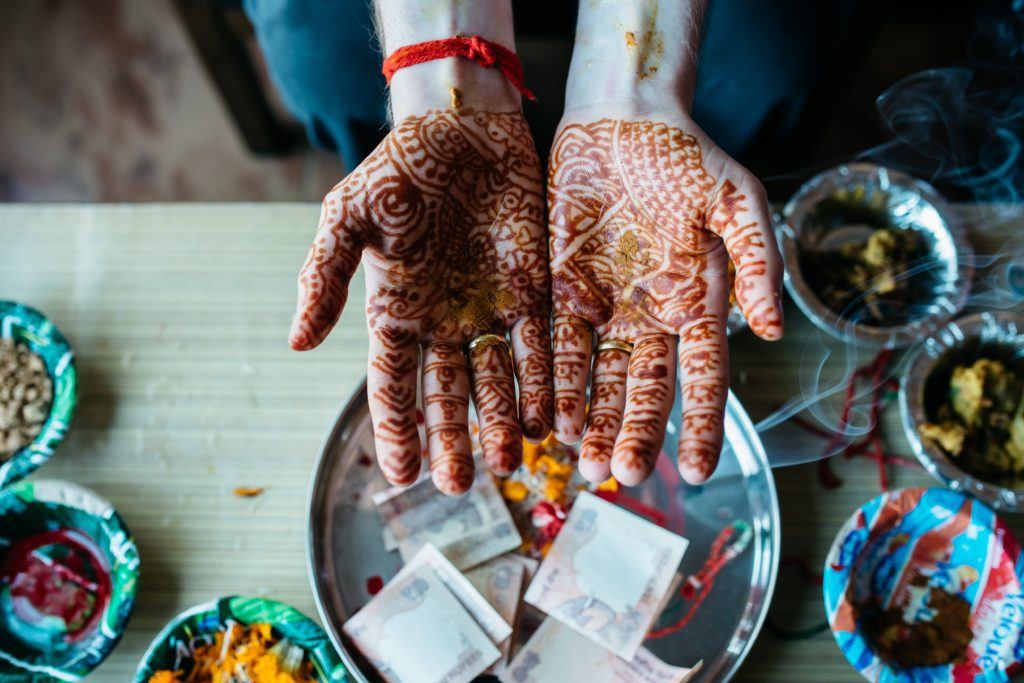
Then, scoop your henna mixture into your new applicator bag. Whatever henna you do not immediately use, you should freeze to preserve it.
Practicing
It is recommended that you practice a few easy henna tattoos on paper first, as once it’s applied to your skin, it can last for one to two weeks.
Don’t be afraid to change the size of the hole in your bag if you think finer or thicker lines are needed for your particular design.
There are many places to find henna tattoo designs, including popular sites like Pinterest.
Protecting
Once you have your design, wash your skin with mild soap and water.
If your skin is very oily, apply the rubbing alcohol to ensure your skin is ready to accept the henna.
Next, make sure that wherever you don’t want to dye is well protected. Wear gloves on your hands and keep your clothing and working surface covered.
Henna is an aggressive dye, and can permanently stain cloth.
Applying to the Skin
The best place to put a henna tattoo is on the hands and feet, as they will dye darker. Central body parts don’t stain as easily.
The best way to do a henna hand tattoo is to start simple. If you look at even complex henna designs, it is basic shapes repeated in different ways.
When you’re first starting, use shapes like vines, circles, and half-moons to create a pattern. As you become more used to how the henna comes out, you can add more to your designs.
Work from the center of your design outwards to avoid smudging as much as possible.
If you do make a mistake while you’re drawing your design, remove the paste from your skin quickly with a Q-tip. This should prevent the mistake from staining.
Here’s a video showing how to apply henna designs to the skin.
DIY Henna Tattoo Aftercare
Once you have finished your design, let it dry. Cracking is a natural part of the drying process and should be no cause for concern.
If you want a faster completion, you can use a hair dryer to speed the process along.
Once it is dry, wrap your design in plastic wrap and let it sit for at least 10 hours. Make sure to keep it dry to ensure that it sets properly.
After you unwrap it from the plastic, soak a cotton ball in olive oil or vegetable oil, then rub the paste off gently.
Over the next 10-12 hours, you’ll notice the design will continue to darken. If you notice some excess flakes of henna, remove them by gently blotting with mild soap and water.
For at least the first day after your tattoo is dry, avoid water. Avoid swimming for as long as you have the henna tattoo, or else chlorine will damage it.
Your design should last from one to two weeks.
If you need to remove your henna for any reason, you can soak your design in salt water for 20-30 minutes, or go swimming in a chlorine pool. The chemicals in the pool water, or the salt, will dissolve the henna.
Some people are allergic to henna. If you notice any sign of an allergic reaction around the site of your tattoo, visit a doctor to ensure that you suffer no dangerous side-effects.
Popular Henna Tattoo Designs to Choose From
While the possibilities for your henna tattoo are endless, there are a few popular design choices, and each of them have different meanings.
Once you get used to mixing and applying your concoction, try your hand at more complex shapes and styles, such as:
Flowers
Symbolizing beauty, health, and joy, flower patterns are popular for Indian brides on their wedding day. Flower buds can symbolize new life, fertility, and joy.
Lotus flowers specifically represent the awakening of your soul, along with creativity, purity, femininity, and grace.
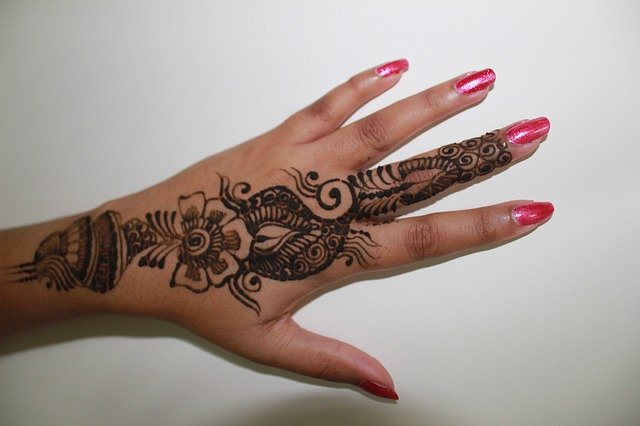
Sahasrara (or the crown chakra)
This complex design is an ancient symbol, believed to unite the soul with a divine sense of force.
Fish
While these designs are harder to make with henna, they can be elegant and subtle with practice. Fish are used to represent a woman’s eyes.
Sun
A relatively easy design to master, the sun is a powerful symbol. It stands for knowledge, eternal love, immortality, and resurgence.
Elephants
Another complex design to try, elephants are very symbolic in Indian culture, representing wisdom and royal power.
Birds
Symbolizing a messenger between heaven and earth, their long wings and feathers give you the opportunity to play with designs traveling along your limbs.
Swallows, peacocks, and hummingbirds are all common designs.
Butterflies
Representing femininity, these are perfect to pair with a design of flowers.
They are also commonly used to represent transitions and growth in one’s life.
Vines and Leaves
Symbolizing vitality and devotion, they can be extended with other designs to add intricacy and meaning.
They are especially good for newlyweds, evoking a sense of devotion and dedication.
Paisley
Aside from being an intricate and popular design, paisley designs represent luck and fertility.
The more you practice your craft, the more designs are open for you to try.
Many henna artists now use a mix of traditional and modern designs in their artwork, and may even use henna as a way to test out a tattoo before they get it permanently inked.
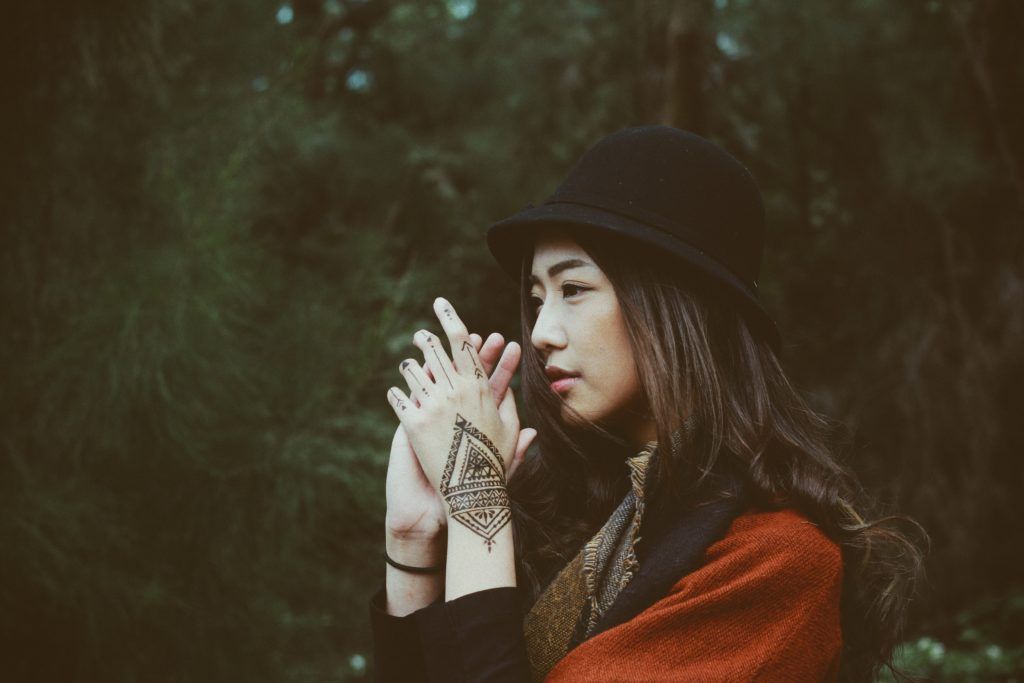
Do you have any tips for creating henna tattoo designs?

